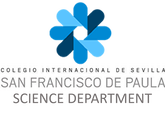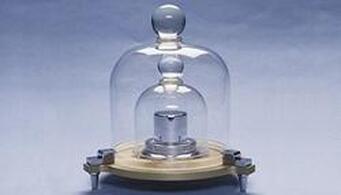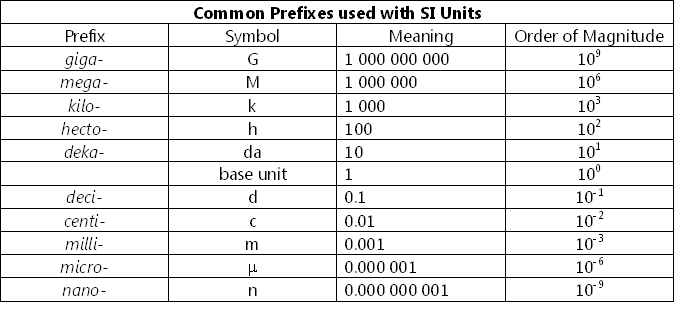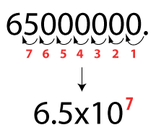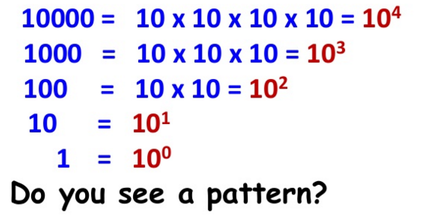UNIT 1 - PHYSICAL QUANTITIES AND SCIENTIFIC ACTIVITY
Key concept - Relationships -
Related concepts - Evidence and Patterns -
Global context - Scientific and Technical Innovation - (How the world works) e patterns..
Related concepts - Evidence and Patterns -
Global context - Scientific and Technical Innovation - (How the world works) e patterns..
Key Words:
|
|
|
Task guide
The tasks and questions on the Website will be coloured to represent the different style of questions that you will find in your exams. The tasks should be completed in your "Year 8 Science" Team or Word document.
Green - Stating scientific knowledge
Orange - Applying scientific knowledge and understanding
Red - Analysing and evaluating information
There will also be "extension" tasks for students who finish tasks quickly! Also look out for links to interactive resources and videos.
The tasks and questions on the Website will be coloured to represent the different style of questions that you will find in your exams. The tasks should be completed in your "Year 8 Science" Team or Word document.
Green - Stating scientific knowledge
Orange - Applying scientific knowledge and understanding
Red - Analysing and evaluating information
There will also be "extension" tasks for students who finish tasks quickly! Also look out for links to interactive resources and videos.
Physical Quantities
|
|
|
Scientists, make observations and ask basic questions. For example, how big is an object? How much mass does it have? How far did it travel? To answer these questions, they make measurements with various instruments (e.g., meter stick, balance, stopwatch, etc.). Without standardized units, it would be extremely difficult for scientists to express and compare measured values in a meaningful way
To resolve the problem with measures which varied from one person to the other and from one place to the other, the International System of measures (Système International d’Unités, SI) was established. In order to establish the SI system, first of all, they determined the base quantities and the units used to measure them.
To resolve the problem with measures which varied from one person to the other and from one place to the other, the International System of measures (Système International d’Unités, SI) was established. In order to establish the SI system, first of all, they determined the base quantities and the units used to measure them.
Matter, Measurements and Units
Some physical quantities are more fundamental than others. In physics, there are seven fundamental physical quantities that are measured in base or fundamental units: length, mass, time, electric current temperature, amount of substance, and luminous intensity. Units for other physical quantities (such as force, speed, and electric charge) are described by combining these seven base units and are called derived units..
The SI unit for length is the meter (m). The definition of the meter has changed over time to become more accurate and precise. The meter was first defined in 1791 as 1/10,000,000 of the distance from the equator to the North Pole. Later this was redefined to be the distance between two engraved lines on a platinum-iridium bar. (The bar is now housed at the International Bureau of Weights and Measures, near Paris). In 1983, the meter was given its present definition as the distance light travels in a vacuum in 1/ 299,792,458 of a second.
|
The SI unit for mass is the kilogram (kg). Until May 20th 2019, it was defined to be the mass of a platinum-iridium cylinder, housed at the International Bureau of Weights and Measures near Paris.
This is a copy of THE kilogram . It was kept under two bell jars, to avoid or prevent mass changes. It is made of a platinum (90%) - iridium (10%) alloy, 'Le Grande K' the original is kept in Sèvres, France. Watch this video |
In Spain we have exact copies of 'Le Grande K' numbers 24 and 3, in the CEM (Centro Español de Metrologia in Madrid)
The only problem is as the video states; 'Le Grande K' does not have a mass of 1 kilogram anymore, and that is the reason that the SI unit of mass needed to be redifined.
It is now defined in terms of a universal constant of nature to ensure the long term stability of the kilogram.
The new definition relates the kilogram to, amongst things, the equivalent mass of the energy of a photon given its frequency, via the Planck constant.
The only problem is as the video states; 'Le Grande K' does not have a mass of 1 kilogram anymore, and that is the reason that the SI unit of mass needed to be redifined.
It is now defined in terms of a universal constant of nature to ensure the long term stability of the kilogram.
The new definition relates the kilogram to, amongst things, the equivalent mass of the energy of a photon given its frequency, via the Planck constant.
|
TASK 1a
|
|
|
TASK 1b.
In your NSD, or in your class paper notebook answer the following questions
1. What is the difference between 'fundamental' and a 'derived' unit? Give an example of each)
2. What is the definition of a second?
3. What is this? (Copy the image then search for it) We don't use this as the definition anymore, what is the definition for this quantity and unit?
In your NSD, or in your class paper notebook answer the following questions
1. What is the difference between 'fundamental' and a 'derived' unit? Give an example of each)
2. What is the definition of a second?
3. What is this? (Copy the image then search for it) We don't use this as the definition anymore, what is the definition for this quantity and unit?
Prefixes for SI units
Scientific Notation
Scientific notation is a way of writing numbers that are too large or small to be conveniently written as a decimal. For example, consider the number 65,000,000. It’s a rather large number to write out. To save time when writing we can use powers of 10 to create short versions of long numbers.. The scientific notation for this number is 6.5x107
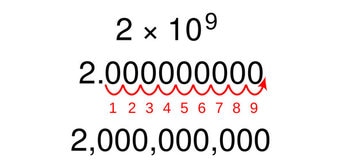
Rules for scientific notation
To be proper scientific notation you must write
* a number between 1 and 9.9
* multiplied by a power of 10
To be proper scientific notation you must write
* a number between 1 and 9.9
* multiplied by a power of 10
REFERENCES
BBC,. (2015). The Kilo Master, Mass and Moles, Precision: The Measure of All Things - BBC Four. Retrieved 30 June 2015, from http://www.bbc.co.uk/programmes/p01b8sj5
Cem.es,. (2015). CEM | METROLOGIA | SISTEMA INTERNACIONAL DE UNIDADES. Retrieved 30 June 2015, from http://www.cem.es/cem/metrologia/sistema_internacional_de_unidades
HubPages,. (2015). Converting within the Metric System using the Metric Staircase. Retrieved 30 June 2015, from http://kthix10.hubpages.com/hub/Converting-within-the-Metric-System-using-the-Metric-Staircase
EETimes,. (2015). Goodbye, Fundamental Kilogram & Ampere | EE Times. Retrieved 29 June 2015, from http://www.eetimes.com/author.asp?section_id=36&doc_id=1323806
Cem.es,. (2015). CEM | METROLOGIA | SISTEMA INTERNACIONAL DE UNIDADES. Retrieved 30 June 2015, from http://www.cem.es/cem/metrologia/sistema_internacional_de_unidades
HubPages,. (2015). Converting within the Metric System using the Metric Staircase. Retrieved 30 June 2015, from http://kthix10.hubpages.com/hub/Converting-within-the-Metric-System-using-the-Metric-Staircase
EETimes,. (2015). Goodbye, Fundamental Kilogram & Ampere | EE Times. Retrieved 29 June 2015, from http://www.eetimes.com/author.asp?section_id=36&doc_id=1323806
